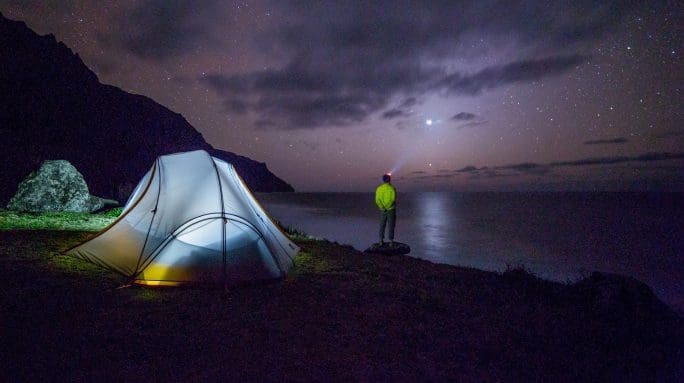Night Vision for Outdoor Enthusiasts

Whether you’re an experienced hiker or someone who simply enjoys a good nighttime trek, night vision technology can elevate your experience in the great outdoors. By enhancing visibility and situational awareness, night vision devices make nighttime excursions safer and more enjoyable. This article explores the benefits of night vision for outdoor enthusiasts, details the various types of night vision technology, provides tips for choosing the right gear, and offers practical advice for using night vision in different settings.
1. Benefits of Night Vision for Outdoor Activities
Enhanced Visibility and Situational Awareness
One of the primary benefits of night vision technology is its ability to enhance visibility in low-light conditions. Whether you’re hiking, camping, or navigating trails, night vision devices amplify available light, allowing you to see more clearly and detect potential obstacles or hazards.
Improved Safety and Security
Night vision devices can significantly improve your safety during the night. By increasing your ability to see in the dark, these devices help you avoid potential dangers, such as tripping over roots, encountering wildlife, or getting lost. For security purposes, night vision can also help you monitor your surroundings and detect any unusual activity.
Increased Opportunities for Wildlife Observation
Night vision technology opens up new opportunities for observing nocturnal wildlife in their natural habitats. Whether you’re a wildlife enthusiast or a photographer, night vision devices allow you to see animals that are active after dark without disturbing them with bright lights.
Better Navigation and Reduced Risk of Getting Lost
Navigating unfamiliar terrain in the dark can be challenging, but night vision devices can make the task much easier. With enhanced visibility, you can follow trails, avoid obstacles, and stay on course, reducing the risk of getting lost.
2. Types of Night Vision Technology
Image Intensification
How It Works: Image intensification technology amplifies existing light (such as starlight or moonlight) to create a visible image. It uses an image intensifier tube to convert photons into electrons, which are then amplified and converted back into visible light.
Pros:
- Effective in low-light conditions
- Lightweight and portable
- Provides clear images
Cons:
- Can be damaged by bright light
- Requires some ambient light to function
Thermal Imaging
How It Works: Thermal imaging detects heat signatures and converts them into images. It uses infrared sensors to detect the heat emitted by objects, making it possible to see in complete darkness and through obstacles like smoke or fog.
Pros:
- Works in complete darkness
- Can see through obstructions
- Detects heat signatures
Cons:
- Expensive
- May lack fine detail
Digital Night Vision
How It Works: Digital night vision devices use digital sensors and displays to enhance low-light visibility. They often include built-in infrared (IR) illuminators to provide additional light in complete darkness.
Pros:
- Affordable
- Can capture photos and videos
- Safe to use in daylight
Cons:
- May have lower resolution
- Can be affected by digital noise
3. Choosing the Right Night Vision Gear
When selecting night vision gear for outdoor activities, consider the following factors:
Environment: Different environments may require different types of night vision technology. For example, thermal imaging may be more effective in dense forests, while image intensification works well in open fields with some ambient light.
Activity: Consider the specific activities you plan to engage in, such as camping, hiking, hunting, or wildlife observation. Each activity may have different requirements for night vision gear.
Budget: Night vision devices can range from affordable digital night vision scopes to high-end thermal imagers. Determine your budget and find the best device within your price range.
Recommendations for Specific Outdoor Activities:
Camping and Hiking: Digital night vision monoculars or goggles with built-in IR illuminators are ideal for navigating trails and campsites.
Hunting: Thermal imaging scopes or binoculars provide excellent detection of game animals in dense vegetation or low-light conditions.
Wildlife Observation: Image intensification binoculars or monoculars allow you to observe nocturnal animals without disturbing them.
Popular Night Vision Devices and Their Features:
- PVS-14 Night Vision Monocular: Gen 3 technology with high-resolution imaging, built-in IR illuminator, and versatile mounting options.
- RNVG – Ruggedized Night Vision Goggle: Gen 3 technology with superior image clarity, hands-free operation, and durable design.
- InfiRay RH25 V2 Multi-function Thermal Monocular: High-resolution thermal imaging, compact design, and fast startup.
4. Practical Tips for Using Night Vision in the Outdoors
Proper Setup and Calibration of Night Vision Equipment:
- Ensure all components are securely attached and properly aligned.
- Calibrate the focus settings for optimal image clarity.
Tips for Maximizing Battery Life:
- Use high-quality, rechargeable batteries.
- Turn off the device when not in use.
- Carry spare batteries for extended outdoor activities.
How to Avoid Common Pitfalls:
- Light Pollution: Avoid using night vision devices near bright light sources.
- Reflective Surfaces: Be cautious of reflections from water, glass, or metal surfaces.
Safety Precautions When Using Night Vision:
- Avoid Bright Light: Direct exposure to bright light can damage the image intensifier tube.
- Stay Aware of Surroundings: Always be mindful of your environment to avoid tripping or collisions.
Conclusion
Night vision technology offers numerous benefits for outdoor enthusiasts, enhancing visibility, safety, and enjoyment during the night. Whether you’re hiking, camping, hunting, or observing wildlife, the right night vision gear can make all the difference. With various types of night vision technology available, you can choose the best device for your specific needs and environment.
